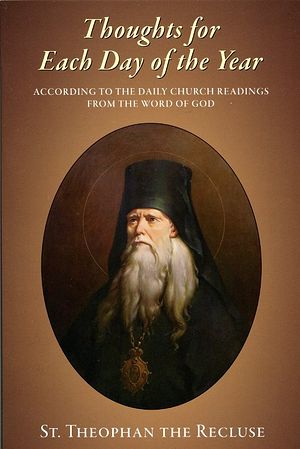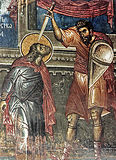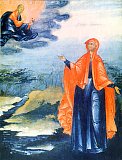

| Previous day | Next day |
| Old Style
April 24
|
Saturday |
New Style
May 7
|
| Bright Week. Fast-free period. | Fast-free period.
|
![]() Martyr Sabbas Stratelates (“the General”), of Rome, and 70 soldiers with him (272).
Martyr Sabbas Stratelates (“the General”), of Rome, and 70 soldiers with him (272).
Martyrs Pasicrates, Valentine, and Julius, at Dorostolum in Moesia (228). Martyrs Eusebius, Neon, Leontius, Longinus, and others, at Nicomedia (303). St. Thomas, fool-for-Christ, of Syria (ca. 546-560). St. Elizabeth the Wonderworker, of Constantinople (6th c.-8th c.). St. Sabbas of the Kiev Caves (13th c.) St. Alexis the Hermit, of the Kiev Caves (13th c.) New Hieromartyr Branko, priest, of Veljusa, Serbia (1941).
Martyr Alexander of Lyons (ca. 177). St. Innocent, priest, on the Mount of Olives (4th c.). St. Wilfrid, bishop of York (709). St. Egbert, bishop of Iona (729). St. Xenophon, founder of Xenophontos Monastery, Mt. Athos (ca. 1018). New Martyr Doukas of Mytilene (1564). Sts. Symeon (Stefan) (1656), Elias (Iorest) (1678) and Sava (Brancovici) (1683), metropolitans of Ardeal (Transylvania), confessors against the Calvinists. St. Joseph the Confessor, bishop of Maramures (Romania) (ca. 1711). New Martyr Nicholas of Magnesia (1795). New Martyr George, in Anatolia (1796). St. Alexis Toth, priest, of Wilkes-Barre, Pennsylvania (1909).
Repose of Schemamonk Nicholas of Valaam (1947).
Thoughts for Each Day of the Year
According to the Daily Church Readings from the Word of God
By St. Theophan the Recluse

Saturday. [Acts 3:11–16; John 3:22–33]
We have two lives, fleshly and spiritual. Our spirit is as though buried in our flesh. Once it begins to extract itself—coming to life by God’s grace—from its intertwining with the flesh and to appear in its spiritual purity, then it will be resurrected, or it will resurrect itself piece by piece. When it wholly tears itself out of this binding, then it comes forth as if from a tomb, in a renewed life. In this manner the spirit becomes separate, alive and active; whereas the tomb of the flesh is separate, dead and inactive, though both are in the same person. This is the mystery of what the apostle says: where the Spirit of the Lord is, there is liberty (II Cor. 3:17). This is liberty from decay, which surrounds our incorruptible spirit; or from passions, corrupting our nature. This spirit, entering into the freedom of the children of God is like a beautifully coloured butterfly, fluttering away from its cocoon. Behold its rainbow colouring: love, joy, peace, longsuffering, gentleness, goodness, faith, meekness, temperance (Gal. 5:22). Is it possible for such a beauty of perfection not to arouse in us a desire to emulate it?


